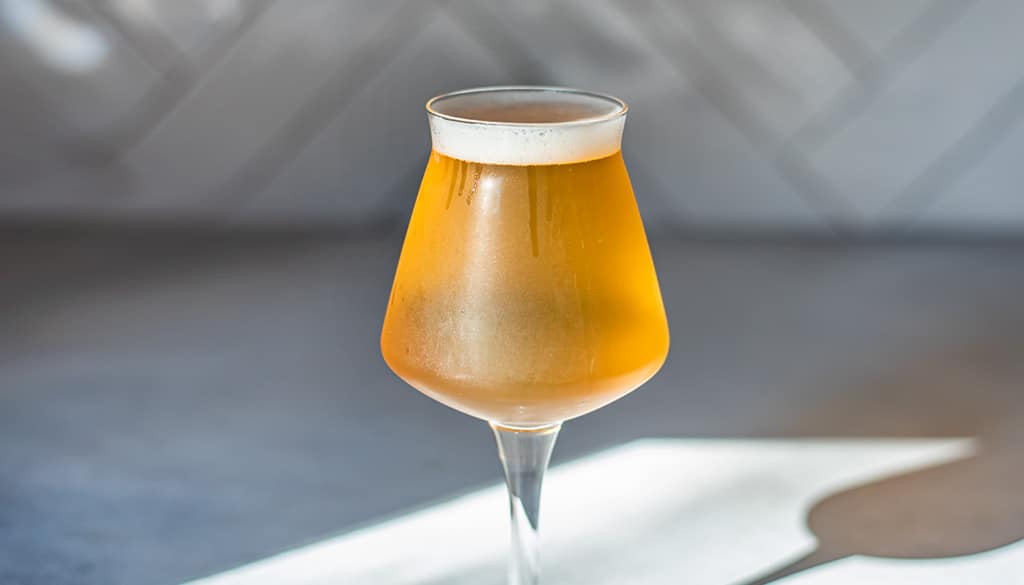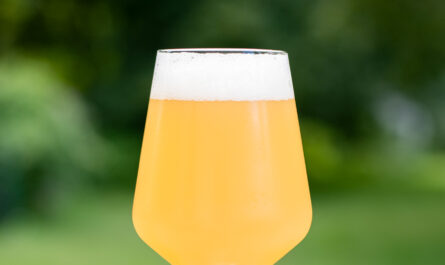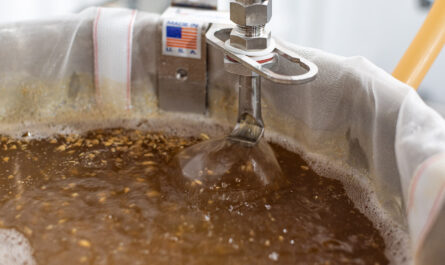I can’t think of a better beer style to infuriate the craft beer community even more than the NEIPA. The cold IPA is an emerging style that is often confused with the India Pale Lager (IPL). Both the IPL and cold IPA share similar qualities as they’re both a hybrid between a lager and an IPA. But the similarities stop right there.
The cold IPA was born in 2018 by head brewer, Kevin Davey of Wayfinder Brewing in Portland, Oregon. Here’s how they describe it: “Cold IPA hits with a strong punch of aromatic hop intensity and high bitterness but finishes crisp and clean leaving the drinker craving another sip. It’s Wester than West Coast.” You can learn more about their specific criteria here. Personally, I’m eager to see how this beer evolves as more breweries pick up the style.
I finally created my own cold IPA recipe and really loved how it came out. I tried to brew this beer to style but also make it easy to follow and replicate for homebrewers. The final result is a crisp and refreshing citrus-forward beer that is reminiscent of a medium-bodied American lager. Let’s dive into some details.
What Is a Cold IPA?
There are a few technical differences between the IPL and cold IPA. First off, a cold IPA features an adjunct lager grist of mostly pilsner and either 20-40% flaked corn or flaked rice (or some combination of the two). This yields a crystal-clear beer with an incredibly clean and crisp profile. The cold IPA omits any specialty malts like Munich, Vienna, crystal, biscuit, or caramel.
The cold IPA is fermented on the cool range of ale temps (63-65°F) but with a lager yeast strain (often Fermentis 34/70). It is in fact on the higher end of lager fermentation temps. This produces a very clean fermentation profile with minimal to no esters. Lastly, the cold IPA draws a very similar hopping schedule to the NEIPA. Whirlpool additions and late dry hopping add lots of hop flavor and aroma that really shines through thanks to the open canvas the yeast and grist provide.
To sum it all up and oversimplify, my cold IPA recipe is a dry-hopped crispy boy that is super crushable and citrus-forward. Almost like a dry-hopped American light lager with a fuller mouthfeel and more flavor.
What Is an IPL?
The biggest difference between the IPL and cold IPA is the grist. Most IPL recipes I’ve found call for a base of American 2-row or Pilsner paired with either Munich, Vienna, crystal, or caramel. This adds color, sweetness, and additional malt character typical in west coast IPAs or lagers. The IPL is typically fermented at traditional lagering temps, making temperature control more critical to the process. The IPL shares a similar hopping schedule to the cold IPA, with a greater emphasis on hot side additions. An IPL basically takes your classic American IPA and simply substitutes the ale yeast for a lager yeast.
The way I interpret it, the cold IPA is a spin-off of the IPL but with tighter constraints and more emphasis on showcasing American hops. Confused? Good. Regardless, I love the way this beer came out and I think you’ll appreciate how delicious it is.
Ingredients
Fermentables
10 lb (74.1%) — Avangard Pilsner Malt — 1.8 °L
3 lb (22.2%) — Thomas Fawcett Maize (corn), Flaked — 2 °L
8 oz (3.7%) — BestMalz Acidulated — 2.8 °L (or as needed for mash pH)
Boil
0.5 oz (5 IBU) — Simcoe 13% — 30 min
Whirlpool
2 oz (15 IBU) — Citra 12% — 30 min @ 180°F
Dry Hops
3 oz — Citra 12% — Day 7
2 oz — Simcoe 13% — Day 7
Yeast
1 pack Saflager W-34/70 Dry Lager Yeast
Other
Whirlfloc – 15 minutes
Water Profile
Cl– 50
SO42- 100
Specifications
Method: All-grain
Batch size: 5.5 gallons
Efficiency: 65%
OG: 1.058
FG: 1.008
ABV: 6.6%
SRM: 3.9
Target Mash pH: 5.2 (adjust with acid malt/lactic acid as needed)
Mash Temp: 150°F – 60 minutes
Boil: 60 minutes
Fermentation Temp: 63-65°F
Notes
Day 1: Pitch yeast at 63-65°F and let free rise to 70°F on days 6-7.
Day 7: Add dry hops at 70-72°F under 10 PSI. Drop the hops out after 72 hours if you have a conical. The head pressure will help push the hops to the bottom of the cone.
Day 10-11: Crash to 33°F for 48 hours. Proceed with packaging/cold conditioning for another week in the keg at serving temps. Should be prime drinking by days 18-21. I used gelatin to help clear the beer further.
Use code HAZY20 to get 20% off your purchase of $100 or more at YVH!





Me and my buddies are giving this a shot, we are on day 8, can’t wait til next week
Is 1 packet of lager yeast right?
correct
Uh, if your using Lager yeast, this is a lager, not an Ale.
agree to disagree
Is lager a style, a process, or a yeast? Have you even thought about it at all? Lmao
Absolutely not. Lagering is a process of clarifying beer over a period of time while also using a bottom fermenting yeast. This is using a lager yeast at ale temps and turning a beer in 14-21 days. Totally different.
I recently brewed this recipe, but dry-hopped in the fermenter; otherwise everything the same. It’s a great beer, a real hop aroma bomb with only mild bitterness. Drinks like a lite beer, kicks like a mule.
I am on day 3 in the fermenter. Do you have pressure on it the whole time or just after day 7 when dry hopping?